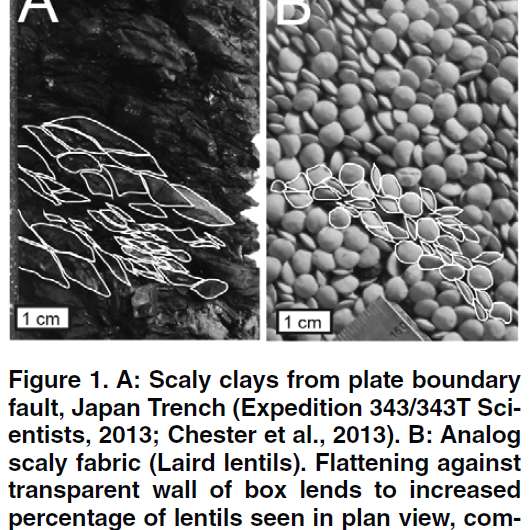What do lentils have to do with geology?

When clayey materials are compressed and sheared, they commonly develop a "scaly fabric" wherein the clay is divided by braided shear surfaces into lentil-shaped chips. Although such scaly fabrics are found at the bed of glaciers, the base of landslides, and in gougey faults, little is known about how they form or how they deform. In their article for Geology, Matthew Tarling and Christina Rowe use dry lentils to help explore this process.
Tarling and Rowe built a shear box with a sliding floor and filled it with lentils. In a series of experiments, they show that the lentils have a tendency to shift constantly against one another when the bulk is shearing, prohibiting the development of long-lasting faults.
Each lentil follows a slightly different path, at different speeds, to accomplish the broad deformation of the whole. This "delocalization" behavior seems to be intrinsic to the system. This observation suggests an explanation for why scaly layers of clay may grow so broad in faults, landslides, and the beds of glaciers, and why these types of shear networks do not grow into localized fault zones.
More information: Experimental slip distribution in lentils as an analog for scaly clay fabrics, Matthew S. Tarling, http://dx.doi.org/10.1130/G37306.1.
Journal information: Geology
Provided by Geological Society of America





















